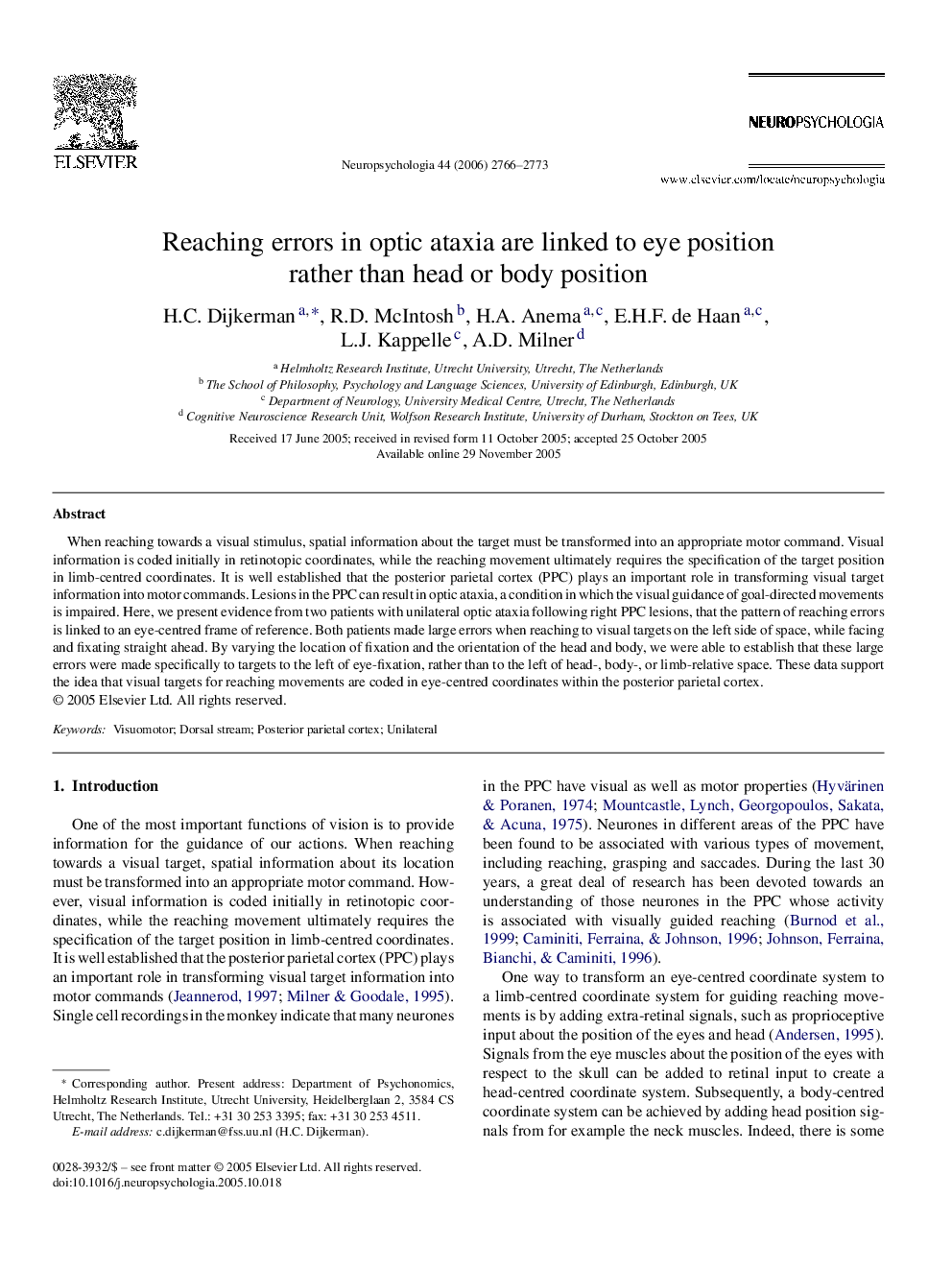| Article ID | Journal | Published Year | Pages | File Type |
|---|---|---|---|---|
| 945526 | Neuropsychologia | 2006 | 8 Pages |
When reaching towards a visual stimulus, spatial information about the target must be transformed into an appropriate motor command. Visual information is coded initially in retinotopic coordinates, while the reaching movement ultimately requires the specification of the target position in limb-centred coordinates. It is well established that the posterior parietal cortex (PPC) plays an important role in transforming visual target information into motor commands. Lesions in the PPC can result in optic ataxia, a condition in which the visual guidance of goal-directed movements is impaired. Here, we present evidence from two patients with unilateral optic ataxia following right PPC lesions, that the pattern of reaching errors is linked to an eye-centred frame of reference. Both patients made large errors when reaching to visual targets on the left side of space, while facing and fixating straight ahead. By varying the location of fixation and the orientation of the head and body, we were able to establish that these large errors were made specifically to targets to the left of eye-fixation, rather than to the left of head-, body-, or limb-relative space. These data support the idea that visual targets for reaching movements are coded in eye-centred coordinates within the posterior parietal cortex.
